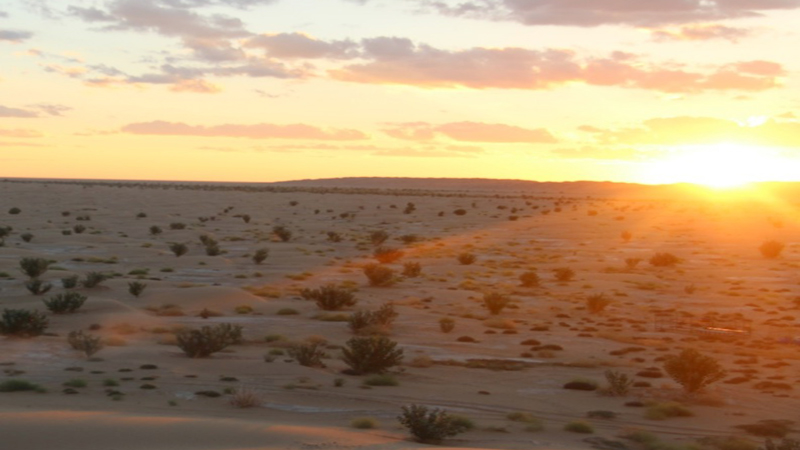

Salalah: Greenery in Empty Quarters is something to be seen and believed. Known popularly as Rub al Khali, the place is synonymous with kilometers of empty desert with no sign of water and hardly any plant seen over there.
Two consecutive natural calamities, which came in the form of tropical cyclones Mekunu and Luban, have changed the landscape of Rub al Khali with a rare view of some wild plants grown along Wadi Malhait, which is famous for unique wild life.
According to Mabrook Ahmed Masan, a resident of Shishr, which is the closest human dwelling near the Empty Quarters, Wadi Malhait is the longest and the most famous natural water canal in the desert.

“Hardly anyone would have seen this Wadi flowing. The full flow of water in this wadi is a rare phenomenon that happens once in 50 or 60 years. Despite being so close to Rub al Khali I have seen so much of water for the first time when the two consecutive cyclones hit Dhofar,” he said.
Many plants have grown in the desert months after the cyclones. Most of the plants are seen in the bed of Wadi Malhait and on its banks. “Generally the wadi is not visible as it is part of the desert, but due to plants all over its bed, it is easy to identify the wadi now,” said Mabrook.
It may be a good reason for weather and agriculture scientists to study the situation and find out the source of seeds in this area.
Natural product chemist, Dr Atiya Fatima, suggests that the seeds might have come along with the water from the plains or from the ‘najd’ where artificial farming is done due to availability of ground water in those vast plains closure to the desert.

Giving a scientific explanation she said: “Rub al Khali is the best known for being hot and dry with extreme variation in temperatures in 24-hour cycle. These extreme environments lead to numerous adaptations in desert plants both at phenotypic and genotypic levels.”
Citing reason for their survival in extreme hot weather, she said: “Plants get their energy through a process called photosynthesis where they use the sunlight to convert carbon dioxide and water into sugar. During this process, oxygen is released along with transpiration of water. Desert plants work hard to replace this lost water. In order to do so, they acquire special adaptations that help them reduce water loss. Some of these features include smaller, fewer and deeper pores, waxy coating, nocturnal transpiration and little leaves. Also to avoid competition some desert plants may produce certain chemicals from their leaves or roots that keep other plants from growing nearby.”

Another way of survival adapted by some desert plants is by their seed preservation. During drought conditions they preserve their seeds in dormant state for months, years or even decades. These seeds start to germinate when the right amount of rain falls and soaks into the soil. This germination changes the desert's dry brown landscape into colorful fields of wildflowers, herbs, and grasses.
The best time to visit there is between October and mid April, as post April it becomes extremely hot and dry.
There are reasons to visit Empty Quarters beyond these scientific explanations. Its serenity can nowhere be felt and its beauty can nowhere be seen.
Oman Observer is now on the WhatsApp channel. Click here



